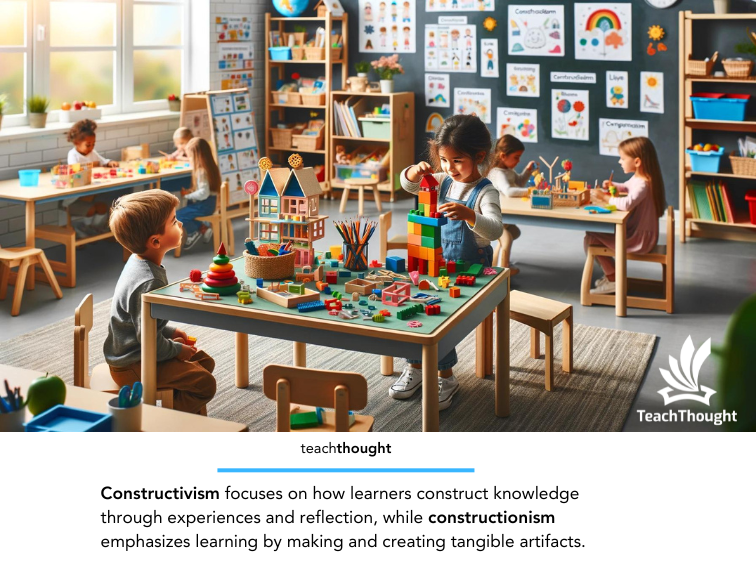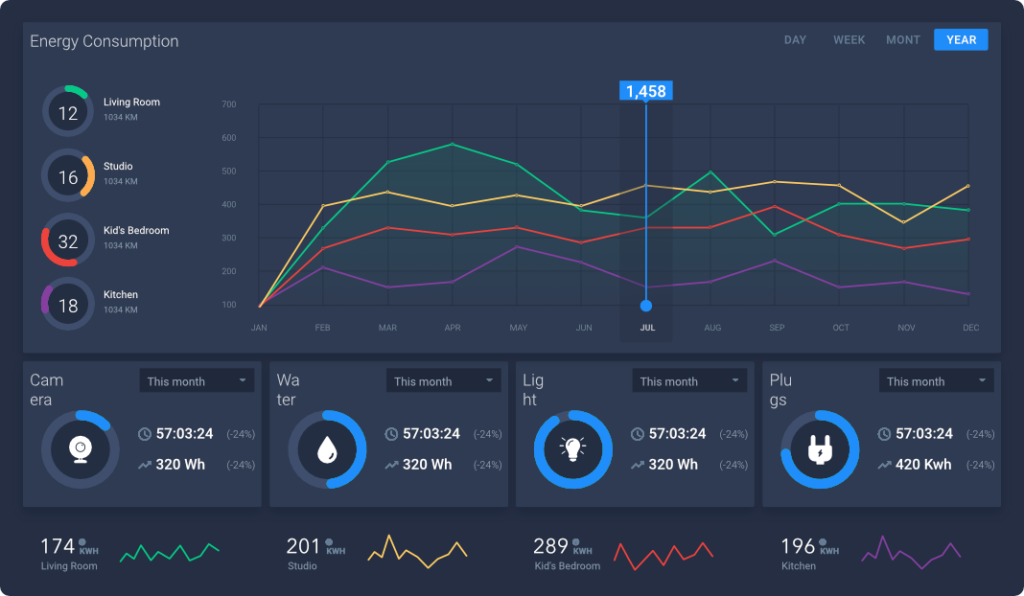
[ad_1]

by Drew Perkins, Director of TeachThought PD
Education is a dynamic field, constantly evolving with new insights and innovative approaches but sometimes those practices aren’t rooted in research and evidence.
Incorporating evidence-based teaching methods allows educators to provide their students with more effective learning experiences, resulting in improved outcomes. Aside from the challenge of limited time many teachers face, it can also be difficult to evaluate research findings that may be so narrow in their findings that they don’t seem applicable to the complexity of actual teaching.
As an advocate and PD provider for project-based learning, I’m occasionally asked for research and evidence that PBL is effective. We do share links to significant supporting research embedded on our PBL Workshop Tools and Resources page but this only tells part of the story. Oftentimes evidence and research point to things that work but not necessarily what works best and for narrow sets of outcomes instead of the more full view of what students will need in preparation for the modern world.
Is project-based learning effective? As with many issues in education and elsewhere, there are competing ‘camps’. There are those who strongly advocate for direct instruction, often noting the ineffectiveness (or worse) of project-based learning and they cite important and valid research findings. I’ve been fortunate to engage with several of them informally and formally on podcasts where we’ve discussed PBL Or Direct/Explicit Instruction, What Works?
It can be comfortable to look through some research and jump to a simple conclusion like, “that makes sense to me” or “that’s what I’ve been doing, see it works!” but harder to look at a wide array of research, including that which challenges prior assumptions, and synthesize to the next steps. For example, one can easily find evidence that direct instruction works and choose to focus on that.
Others might search for PBL research and conclude that they should shift their whole school or district to project-based learning. Neither of those necessarily mean best practices will be pursued and one critique I think is valid is that PBL implementation can and often is done poorly.
This is where a synthesis of educational research can really help and here are three takeaways.
Is Project-Based Learning Research-Based?
1. PBL is Effective at Delivering Specific Learning Outcomes
In John Hattie’s latest book, Visible Learning: The Sequel, he notes:
Students taught using problem-based learning had less knowledge but had better recall of their knowledge. That is probably because, in problem-based learning, knowedge is more often elaborated…The application of knowledge, not the development of knowledge, is the heart of the success of problem-based learning.
Most teachers want learning to go beyond the basic ‘knowing that’ to deeper conceptual understandings. PBL is a great tool for doing this and in our workshops we often frame it by flipping Bloom’s taxonomy for deeper learning. Design and implementation are key.
It isn’t enough to create a project that seems exciting and engaging for students. It should aim for designing and teaching with intent as Hattie and I discussed in this podcast, Ep. 335 John Hattie | Visible Learning: The Sequel. As a side note, there are many different ways to define “PBL”, and we certainly have ours, but I’m taking Hattie’s use of problem-based learning as being in close enough proximity to be useful here.
2. PBL Should Include Direct Instruction
Many advocates for more ‘progressive’ teaching and learning recoil at the idea of direct or explicit instruction. No doubt, it can be boring and demotivating but it doesn’t have to be and while it may not be the most exciting part of a PBL experience, it is essential to scaffold and ‘teach’ certain things.
Research on project-based learning shows direct instruction is especially effective at surface-level knowledge and students must have that in order to be successful at the deeper levels PBL aims for. This doesn’t mean we need to ‘front-load’ the required knowledge before engaging in PBL. Instead, we help teachers design for ‘pulling’ that surface knowledge as part of the project-based learning process.
Perhaps the most cited research on direct instruction is that of Rosenshine’s Ten Principles of Instruction. This and related research is discussed in Chapter 12, Burning the Strawman, of How Teaching Happens by Paul Kirschner and Carl Hendrick, and Jim Heal. Paul Kirschner and I also addressed this and more in our podcast episode 315 How Teaching And Learning Happens.
3. PBL Implementation Needs to be Supported With Professional Development
It certainly won’t come as much of a surprise that any relatively major shift in teacher practice will not be effective without effective professional development support. Students in this study of PBL with second graders showed improvement, like a 63% gain in social studies as compared to the comparison group, over the control group that did not learn through PBL but they most certainly would not have been successful without the PD supports to help them.
This study focused their support on curricular materials and coaching conversations and noted:
A related implication of this research is that policymakers and administrators should consider how to provide appropriate PD support around PBL.
Perhaps some of those teachers have been able to take the initial learning and grow their practice to more sophisticated and impactful PBL implementation but even those will benefit from sustained professional learning to help refine their practice. Conversely, hoping for teachers to implement project-based learning (or any major shift in practice) without significant professional learning is a recipe for disaster.
Combining Strategies For Best Outcomes
The complexity of teaching goes beyond mere teaching strategies but if we’re looking to help students grow their surface, deep, and transfer learning we will need to use a variety of strategies. In this May 2023 review, Let’s talk evidence – The case for combining inquiry-based and direct instruction, which will surely spur further discussion notes, the combination of strategies, employed effectively, is more impactful than focusing on only one or a few.
Our project-based learning workshops help teachers combine strategies like inquiry and scaffolded teaching intentionally aligned with the cognitive complexity and prior academic achievement of expected learning outcomes.
Above and beyond subject-matter characteristics, teachers and curriculum designers should align their instructional and assessment methods with the kind of learning outcomes they expect from students. Early instructional design theories (see, for an overview, Reigeluth, 1983) readily acknowledged the importance of aligning learning strategies with learning outcomes.
These theories recommended using the expository strategies inherent in direct instruction if the goal of the lesson is to remember a piece of conceptual knowledge or a particular procedure. Inquiry-based strategies, on the other hand, were seen as more appropriate for promoting deep understanding and transfer of the subject matter, which students who followed traditional instruction often lacked (see e.g., Ortiz, Heron, & Shaffer, 2005). Frey et al. (2017) showed that these recommendations still hold today.
Reigluth (1983), Ortiz, Heron, & Shafer (2005), Frey (2017)
In a world characterized by constant change, teachers play a pivotal role in equipping students with the necessary skills and knowledge to thrive. By actively engaging with research, educators can enhance their teaching practices, meet diverse student needs, and stay at the forefront of educational innovation.
Embracing evidence-based teaching methodologies not only improves student outcomes but also cultivates a culture of lifelong learning, preparing students for a future full of possibilities. As we move forward, let us encourage and support teachers in their pursuit of research, recognizing its indispensable role in shaping education for the better.
[ad_2]







